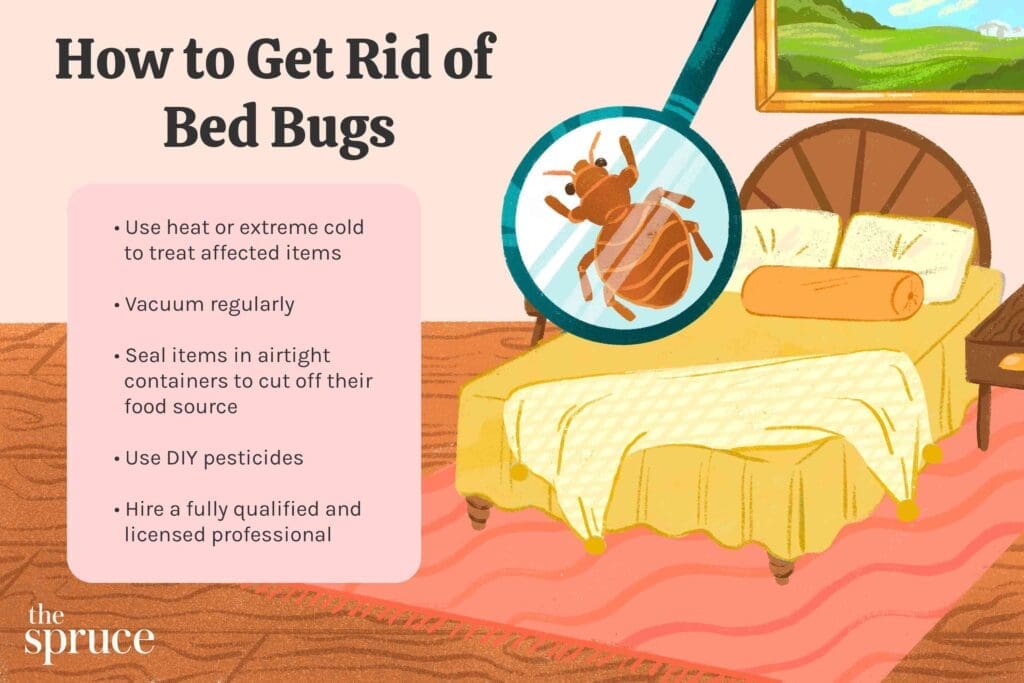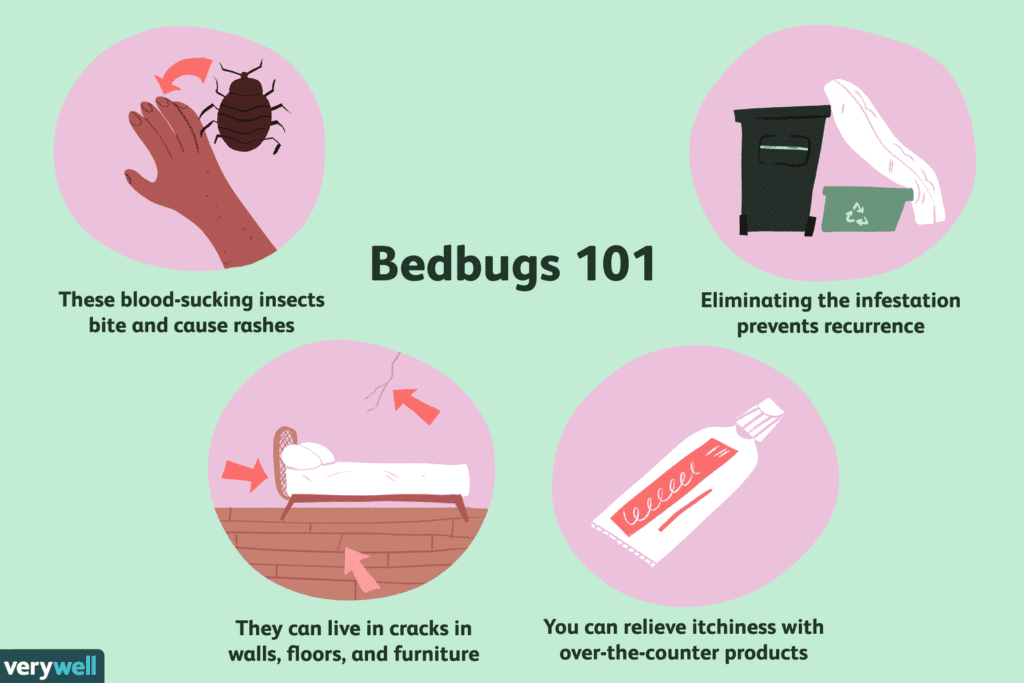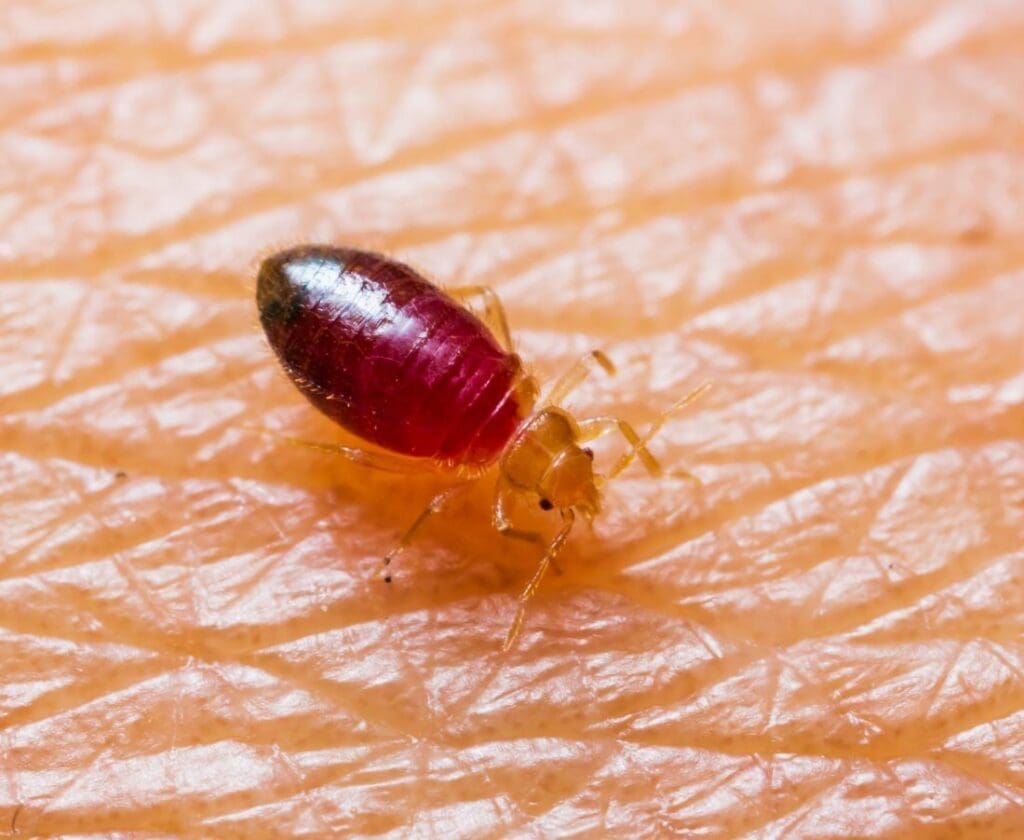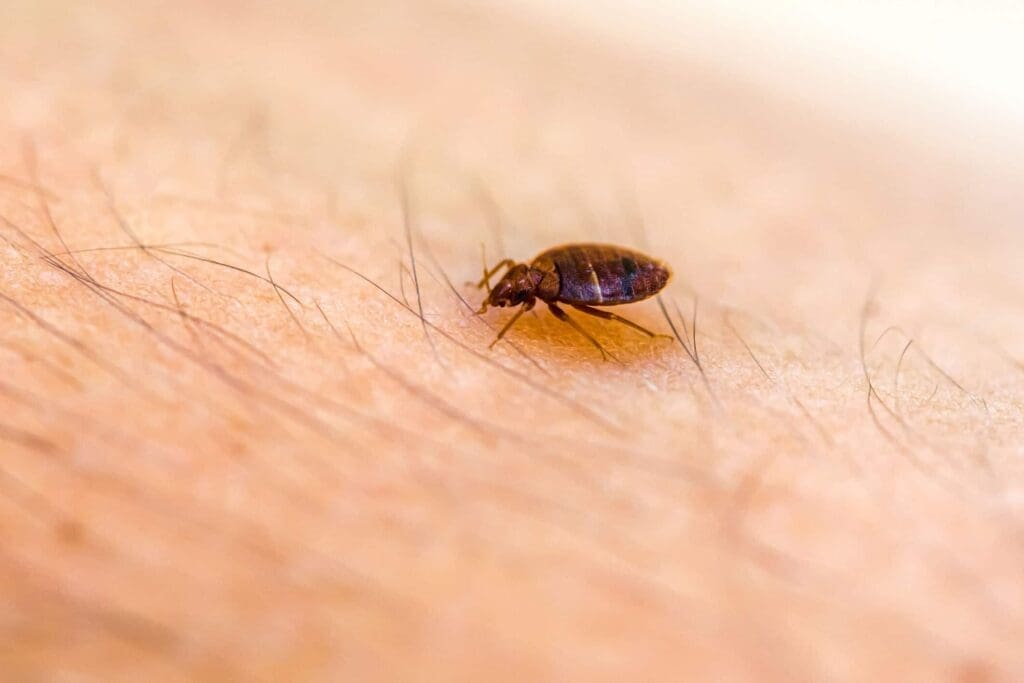Have you ever wondered why there has been a sudden increase in bed bug infestations? In this article, we will explore the causes behind the rise of bed bugs and discuss effective solutions to combat these pesky critters. Whether you have encountered these blood-sucking insects in your own home or simply want to learn more about preventing their presence, we’ve got you covered. So, grab a cup of tea and get ready to uncover the secrets to living a bed bug-free life!

Causes of the Rise in Bed Bug Infestations
Increased global travel
With the increase in global travel, bed bugs have found a perfect mode of transportation. These pests can easily hitch a ride on luggage, clothing, and even in the seams of airline seats. As more people travel internationally, the chances of encountering bed bugs and subsequently bringing them back home have significantly increased.
Lack of public awareness
One of the major reasons for the rise in bed bug infestations is the lack of public awareness. Many people do not know what a bed bug looks like or how to identify their signs. This lack of knowledge leads to delayed detection and treatment, allowing the infestation to spread further.
Resurgence of pesticide-resistant strains
Over the past few decades, bed bugs have developed resistance to many commonly used pesticides. This resurgence of pesticide-resistant strains has made it more challenging to control infestations. These resistant bed bugs can survive exposure to chemicals that would have easily exterminated their predecessors.
Decline in effective pest control practices
The decline in effective pest control practices has contributed to the rise in bed bug infestations. In recent years, there has been a shift towards less aggressive pest control methods, such as the use of integrated pest management (IPM) techniques. While IPM is an important approach, it may not be as effective in eradicating bed bugs compared to traditional pest control methods.
Signs and Symptoms of Bed Bug Infestations
Bite marks on the skin
One of the most common signs of a bed bug infestation is the presence of bite marks on the skin. Bed bug bites are usually small, red, and itchy. They often appear in a linear pattern, as bed bugs tend to feed in a row or cluster.
Blood stains on bedding or furniture
Another indicator of a bed bug infestation is the presence of blood stains on bedding or furniture. After feeding, bed bugs may leave behind small bloodstains on sheets, pillowcases, or upholstery.
Musty odor in the room
If you notice a musty or sweet odor in your room, it could be a sign of a bed bug infestation. Bed bugs release pheromones, which can create an unpleasant smell in infested areas.
Presence of live bugs or shed skins
The presence of live bed bugs or shed skins is a clear indication of an infestation. These pests are small, brownish insects that can be found hiding in mattress seams, cracks and crevices, and other dark areas near their human hosts.

Health Risks Associated with Bed Bug Infestations
Allergic reactions
Some individuals may experience allergic reactions to bed bug bites. These reactions can range from mild itching and swelling to severe allergic reactions that require medical attention. It is essential to address a bed bug infestation promptly to prevent further allergic reactions.
Skin infections
Bed bug bites can lead to secondary skin infections if scratched excessively. Scratching the bites can break the skin, providing an entry point for bacteria. These infections can cause redness, swelling, and localized pain.
Mental health effects
Living in a home infested with bed bugs can take a toll on your mental health. The constant fear of being bitten and the stress of dealing with an infestation can lead to anxiety, insomnia, and even depression. It is crucial to address the infestation promptly to protect your mental well-being.
Sleep disturbances
Bed bugs are nocturnal pests that feed on their hosts while they sleep. Their bites can cause severe itching and discomfort, leading to sleep disturbances. Sleep deprivation can have a detrimental effect on your overall health, affecting your mood, cognitive function, and immune system.
Preventing Bed Bug Infestations
Regular inspection of bedding and furniture
To prevent bed bug infestations, it is essential to regularly inspect your bedding and furniture. Look for signs of bed bugs, such as live bugs, shed skins, or blood stains. Pay close attention to mattress seams, bed frames, headboards, and any other potential hiding places.
Proper hygiene and cleanliness
Maintaining proper hygiene and cleanliness can help prevent bed bug infestations. Washing bedding, clothing, and other fabric items in hot water and drying them on high heat can kill any potential bed bugs or eggs. Additionally, keeping your living space clean and clutter-free can minimize hiding spots for these pests.
Use of mattress encasements
Using mattress encasements can provide an extra layer of protection against bed bugs. These specially designed covers fully encase the mattress, making it difficult for bed bugs to infest or escape. Make sure to choose encasements that are bed bug-proof and constructed with high-quality materials.
Avoidance of second-hand furniture
When acquiring second-hand furniture, be cautious to prevent bringing bed bugs into your home. Thoroughly inspect any used furniture for signs of infestation before bringing it indoors. It is recommended to avoid picking up discarded mattresses or upholstered items from the street.

Treatment Options for Bed Bug Infestations
Professional pest control services
Hiring a professional pest control service is often the most effective and reliable way to treat a bed bug infestation. Certified exterminators have the knowledge, experience, and tools required to eliminate bed bugs safely and effectively. They can utilize a combination of methods such as heat treatments, chemical insecticides, and targeted residual treatments.
DIY bed bug extermination methods
For smaller infestations or if professional services are not immediately available, there are DIY bed bug extermination methods that can be used. These methods include using bed bug sprays, dusts, and traps that are specifically formulated to target and kill these pests. However, it is important to carefully follow the instructions and take safety precautions when using these products.
Heat treatments
Heat treatments have become increasingly popular for bed bug extermination. These treatments involve raising the temperature in the infested area to a level that is lethal to bed bugs. High temperatures are evenly distributed throughout the space, ensuring that bed bugs in all life stages are eliminated.
Chemical insecticides
Chemical insecticides are another treatment option for bed bug infestations. These products can be applied as sprays, dusts, or foggers to target and kill bed bugs. It is important to choose insecticides specifically labeled for bed bug control and to follow the instructions carefully to minimize health risks.
Comprehensive Guide to Hiring a Bed Bug Exterminator
Researching and selecting a reputable exterminator
When hiring a bed bug exterminator, it is crucial to conduct thorough research and choose a reputable professional. Look for exterminators who are licensed, insured, and experienced in dealing with bed bug infestations. Check for online reviews and ask for recommendations from friends, family, or local pest control associations.
Getting cost estimates and comparing services
Before making a decision, it is advisable to obtain cost estimates from different exterminators and compare their services. Request a detailed breakdown of the treatment plan, including the methods to be used and the number of treatments required. Consider factors such as guarantees, follow-up visits, and the overall reputation and reliability of the exterminator.
Understanding the treatment process
Once you have selected an exterminator, make sure to fully understand the treatment process before it begins. The exterminator should provide you with detailed instructions on how to prepare your home, what to expect during the treatment, and any necessary precautions or aftercare measures. Clear communication is essential throughout the entire process.
Ensuring proper follow-up and warranty
After the initial treatment, it is important to ensure proper follow-up and maintenance to prevent a re-infestation. The exterminator should provide a warranty or guarantee that includes follow-up visits if necessary. Additionally, they should offer recommendations on preventive measures to minimize the risk of future infestations.

Common Myths and Misconceptions about Bed Bugs
Bed bugs are only found in dirty places
Contrary to popular belief, bed bugs can be found in both clean and dirty environments. They are attracted to the warmth and carbon dioxide emitted by humans, making any location with a potential host susceptible to infestation.
Bed bugs can jump or fly
Bed bugs are incapable of jumping or flying like other common pests. They rely on crawling to move around and are relatively slow-moving insects. However, they are adept at crawling on different surfaces and can easily hitch a ride on clothing or other items.
Bed bugs are only a problem in mattresses
While bed bugs are commonly found in mattresses due to their proximity to hosts, they can infest various other areas. They can hide in cracks and crevices of furniture, electrical outlets, baseboards, and even inside picture frames. It is important to thoroughly inspect and treat all potential hiding places when dealing with a bed bug infestation.
Home remedies are effective in eliminating bed bugs
There are numerous home remedies and natural treatments suggested for bed bug control. However, these methods are often ineffective or may only provide temporary relief. DIY treatments such as using essential oils, baking soda, or vinegar are unlikely to completely eliminate a bed bug infestation. It is best to seek professional help for a comprehensive and long-term solution.
Tips for Traveling Bed Bug-Free
Inspecting hotel rooms before unpacking
When traveling, it is crucial to inspect hotel rooms for any signs of bed bugs before unpacking. Start by checking the mattress seams, headboard, and nearby furniture for live bugs, shed skins, or blood stains. Use a flashlight to better spot these signs and consider using a luggage rack or bathroom countertop instead of placing your luggage on the bed or floor.
Using protective mattress covers
Using protective mattress covers can significantly reduce the risk of encountering bed bugs while traveling. Encase your mattress in a bed bug-proof cover to prevent these pests from infesting your sleeping area. This extra layer of protection can offer peace of mind during your stay.
Keeping luggage elevated and away from furniture
To minimize the chances of bringing bed bugs back home in your luggage, keep it elevated and away from furniture in hotel rooms. Use luggage stands, racks, or even the bathtub to keep your bags off the floor. Bed bugs are less likely to crawl onto elevated surfaces and hitch a ride in your belongings.
Cleaning and laundering clothing after travel
After returning from a trip, it is important to clean and launder your clothing immediately. Wash your clothes in hot water and dry them on high heat to kill any potential bed bugs or eggs. Vacuum and inspect your luggage, bags, and electronics thoroughly before storing them away.

Product Reviews: Best Bed Bug Sprays and Encasements
Top-rated bed bug sprays
Several bed bug sprays on the market have proven to be effective in treating and preventing infestations. These sprays contain insecticides that are specifically formulated to kill bed bugs on contact. Look for sprays that have positive reviews and offer residual protection against future infestations.
High-quality mattress encasements
When it comes to mattress encasements, it is important to choose high-quality products that are specifically designed for bed bug protection. Look for encasements that are made of durable, bed bug-proof materials and have a secure zipper closure. Read reviews and consider the level of protection offered before making a purchase.
Effective bed bug detection tools
Bed bug detection tools can be valuable in identifying and monitoring infestations. These tools include bed bug traps, monitors, and detection dogs. Traps and monitors can be placed near beds and furniture to capture any crawling bed bugs, while detection dogs are highly trained to sniff out the presence of these pests.
Recommended travel products
For travelers concerned about encountering bed bugs, there are various travel products available to provide added protection. These products include portable bed bug heaters, luggage encasements, and travel-sized bed bug sprays. Consider the specific needs of your travels and read reviews to select the most suitable products.
Educational Resources and Organizations for Bed Bug Awareness
Websites with reliable information on bed bugs
Several websites provide reliable and up-to-date information on bed bugs, their prevention, and treatment. These websites often include resources such as identification guides, FAQs, and tips for dealing with infestations. Some reputable websites include the Centers for Disease Control and Prevention (CDC) and national pest control associations.
National or local pest control associations
National or local pest control associations can be excellent sources of information and education regarding bed bugs. These associations often have resources, training programs, and certified professionals who specialize in bed bug control. Contacting these associations can provide valuable insights and recommendations.
Educational materials and publications
Educational materials and publications dedicated to bed bugs can be found in the form of books, brochures, and online resources. These materials offer in-depth knowledge about the biology, behavior, and effective control methods for bed bug infestations. They can be useful for both professionals and individuals dealing with an infestation.
Support groups for bed bug victims
Dealing with a bed bug infestation can be emotionally and mentally taxing. Joining support groups or online forums dedicated to bed bug victims can provide a community of understanding individuals who have gone through similar experiences. Sharing stories, advice, and support can help alleviate the stress and frustrations associated with bed bug infestations.
In conclusion, the rise in bed bug infestations can be attributed to increased global travel, lack of public awareness, the resurgence of pesticide-resistant strains, and a decline in effective pest control practices. Recognizing the signs and symptoms of bed bug infestations is crucial in order to take appropriate measures before the infestation spreads. Bed bugs can pose health risks such as allergic reactions, skin infections, mental health effects, and sleep disturbances. Preventive measures such as regular inspection, proper hygiene, and avoidance of second-hand furniture can help in avoiding infestations. Treatment options include professional pest control services, DIY methods, heat treatments, and chemical insecticides. When hiring a bed bug exterminator, it is important to research, compare services, understand the treatment process, and ensure proper follow-up. Debunking common myths and misconceptions about bed bugs is important to have a clear understanding of the pest. Traveling bed bug-free requires inspecting hotel rooms, using protective mattress covers, keeping luggage elevated, and laundering clothing after travel. It is also helpful to read product reviews on bed bug sprays, encasements, detection tools, and recommended travel products. Finally, educational resources and organizations dedicated to bed bug awareness can provide reliable information, guidance, and support.

I am Randy, the author behind PestControld.com. Drawing from decades of experience, I aim to provide valuable insights, expert advice, and practical recommendations to help you make informed decisions when assessing viable pest control solutions.